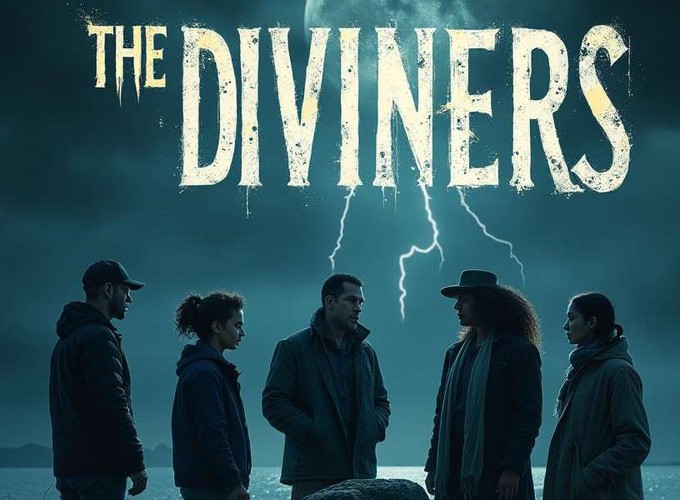Paddling Light: The Diviners, developed by Ludic Rooms in collaboration with talented Highly Sprung Performance Company, is an outdoor, evening experience set on a body of water. The audience members are safely on the canal bank, while the performance takes place on the water itself. The Diviners was first performed at the Coventry Canal Basin as part of BEACON and involved physical theatre performances on a individual kayaks. Over the course of the 30 minutes, these kayaks come together with a pair of large Canadian Canoes. I like to think of it as in Transformers where a bunch of smaller ones combine together into a one mega-transformer - or mega-boat in our case.
As The Diviners is an immersive experience it’s important that audience members are exposed to the storyworld as early as possible. This means that anytime we address the audience we treat them as already being in the storyworld and that they have a reason to be there. They are not just audience members they are part of the experiment. In the short description below, the audience are the misfits discovering the truth!
Following reports of a strange energy emitting from the canal, a group of misfits arrive to discover the truth. In search for answers, The Diviners delve deep into the darkest depths of possible histories and folklore. Uncovering what lurks beneath the curious happenings.
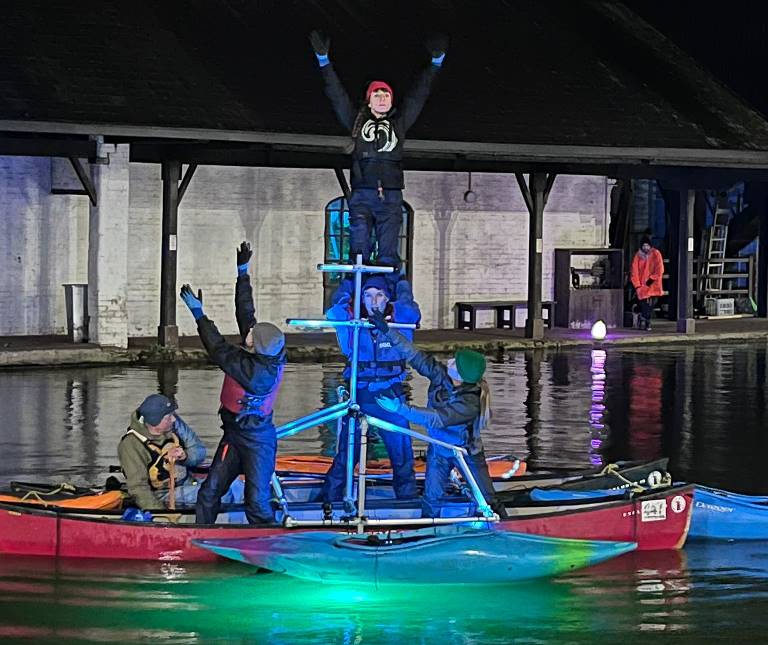
Looking back the vibe of the show feels similar to Mackenzie Crook’s wonderful TV series Detectorists. If you’ve somehow managed to miss out of this incredible piece of television you have my full permission to head straight over to iPlayer - and only return here after you’ve watched all 3 series with Christmas Specials! Actually, since I’ve managed to write an entire page of text I’m going to reward myself with an episode too!
Now, that we’re all back and know what I’m talking about. There is a moment in the series where Lance and Andy open up their detectoring access permissions to the wider detecting community and they make a celebratory day of it. That’s where we are with ‘The Diviners’ - the performers know something unusual is going on but we need the full help of our misfit community to figure out what it is. And in order that the entire community can be involved their mobile phones will become devices that contribute to the experiment.
Again, there’s a running joke in Detectorists where they covet each other’s Metal Detectors, some preferring very modern or expensive models and others more retro. Our community each get allocated a random device which they are encouraged to share with others and make appreciative sounds - recognising the importance of another’s scanning device. “Nice, that’s the ZX64 model. Pretty sweet!”
The invitation to the community goes out via The Diviners website (with 90’s internet aesthetic) - so you can get into the story world before you arrive at the event. It’s still live if you’d like to peruse it:
That’s the intro out of the way. I’ll cover some of the technical details which will explain more about the show. As it’s quite a difficult show to stage (it need’s a canal basin, kayaks, canoes, performers & support from expert canoeists) I can’t promise it will tour in 2025. We have some ideas around land based versions using the same technology which will hopefully make an appearance later this year.
The Origin Story - PlayfulPixels
As The Diviners takes place at night - lighting is key to the experience. I had already been experimenting with the idea of pushing content live to audience members’ phones. The original idea was to remotely change the color of audience phone screens. With an audience of around 100 people, we could synchronize their screens to the same color or create dynamic effects, such as rainbow transitions at specific points in the show. This concept is similar what Coldplay concerts have become famous for, where Xyloband LED wristbands change color in sync with the music — an industry that has developed extensively around large-scale performances to create stunning visual effects.
In order that the ColdPlay colour changing devices can be mass produced at such a scale they are fairly dumb. Some LED lights, a very simple microprocessor and someway to receive the colour instruction (Radio Frequency or InfraRed). However, if instead we are using a mobile phone we have the colour screen (and speaker) with decent CPU and many different sensors (e.g. GPS, Bluetooth). As well as being connected to the internet and having a limitless supply of content available.
There’s lots to explore there - but my game design background meant that it was the audience interactions that was the route to go down. For example, if someone moved to a specific location, their phone’s color might change or audio be triggered. If a group of people came together, their screens could synchronize, fostering a more playful and immersive experience.
That early version of the concept was known as Playful Pixels. This was inspired by the LED pixel technology used in the London 2012 Olympic Games opening ceremony, where each seat had a small 3x3LED matrix (I believe it was a 3x3 grid). The result was a stadium-wide light display (essentially a huge TV screen with 634K pixels), though at an enormous production cost.
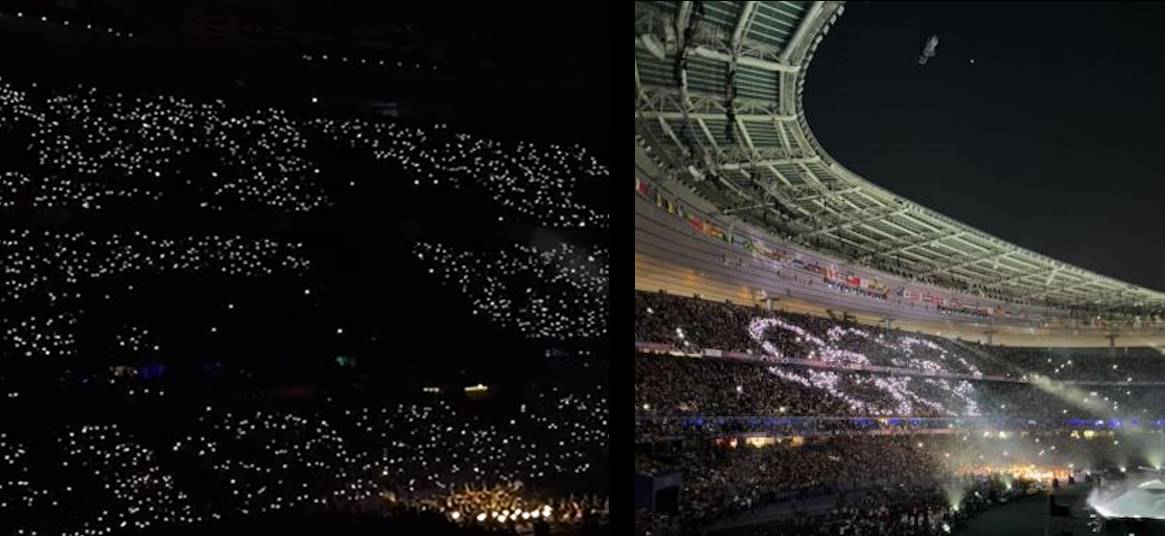
At the 2024 Olympic Games Closing Ceremony in Paris this effect was recreated using PixMob’s IR wristbands. PixMob’s Moving Head IR projectors (called Massive Video Transmission) were used to ‘paint’ frames of animation onto the crowd. This created incredible effects, such as an animated horse running across the entire stadium, utilizing the audience as a dynamic canvas.
For those interested in this kind of technology, there’s been fascinating open-source work done on reverse engineering these LED bracelets - check out XyloLibrary or PixMob IR gits.
Expanded for The Diviners
As, The Diviners happens at night, it was clear that lighting would play a key part in the experience. We wanted to light up: the performers and their kayaks the ‘make-believe’ Divining devices that the performers use a large arch that is raised by the performers (part of the finale)
This was handled by strips of lighting WS2812B and WS2811 LEDs - controlled wirelessly by GLEDOPTO WLED Light Strip Controllers (and we manually programmed some ESP32 boards - it’s just ESP32s inside the GLEDOPTO running WLED). It was a lot of work to protect this lighting setup from the cold & water elements of Coventry Canal Basin. Tip: Silicon sleeves can provide IP67 protection which are submergable. We controlled these lights using simple scripts assigned to buttons on a touch screen.
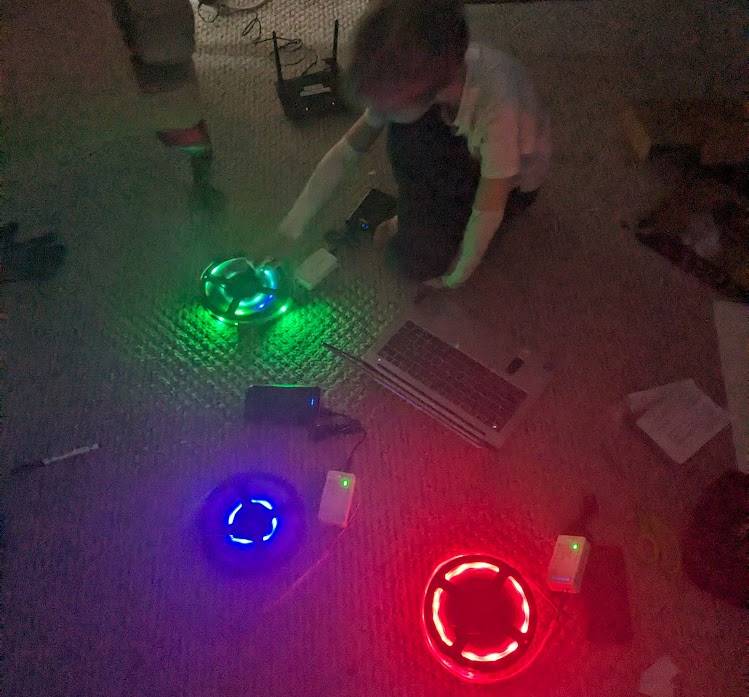
PlayfulPixels would allow us to synchronise the lighting on the audience with the other effects during the show. It was at this point we realised that the audience phones could have more features and also be linked much closer to the show.
What is the reason that the audience have their phones out?
The audience can be using The Diviners website to get more information about the event. We can then ’take control’ of their device and push out content as the show begins.
Why do we want them to light up - other than it looks pretty.
The audience phones become integral to the show. They take on the role of a Diviner device that allows us to detect the abnormalities in the environment and under the water.
So, for this we combined the PlayfulPixels app with The Diviners website. No longer would you go to a special website to allow us to control your phone. Instead, you just join the standard show website. In addition, we needed to add more content types - which allow us to send images and videos to audience phones - not just colours.
It became clear that this technology platform could be used in shows other than just The Diviners - which is where NAIAD was born.
The NAIAD Platform
NAIAD is a platform for pushing content to audience mobile phones during a live show / performance. If you want to get straight to the details of NAIAD you can skip to the NAIAD page on Ludic Room’s site/
If you like the sound of this there’s also the option to work with us on NAIAD.
Funding and Future Development
We were fortunate to receive a small amount of funding from Innovate UK to further develop the NAIAD platform. This is where we began to think about how it could be used for other projects - rather than a bespoke tool just for The Diviners. Our main objectives were to make it more reusable, support a wider range of content types, and enhance accessibility.
It became apparent that NAIAD could also be used successfully from an accessibility point. For instance, the show’s website can now include all necessary explanations and options for accessibility. Audience members could choose whether they want to see certain content based on trigger warnings, opt in to certain aspects of the show or even enable live subtitles throughout.
In addition, we have created multiple small prototypes to test different aspects of the platform and test these with audiences. The best way to truly understand its potential is to use it in different scenarios and refine it based on real-world feedback.
We built prototypes of:
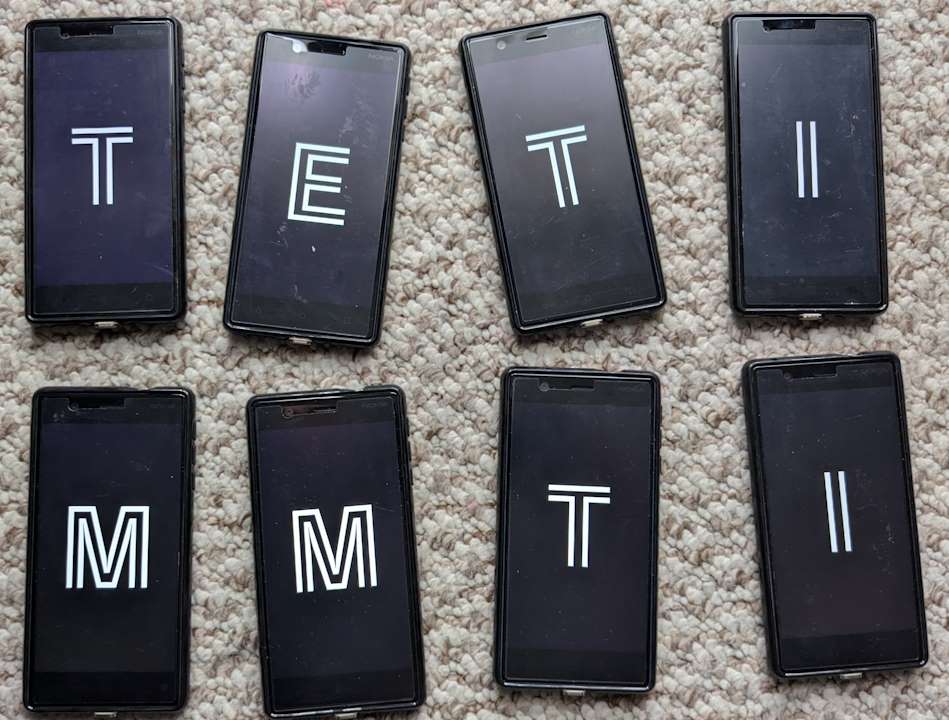
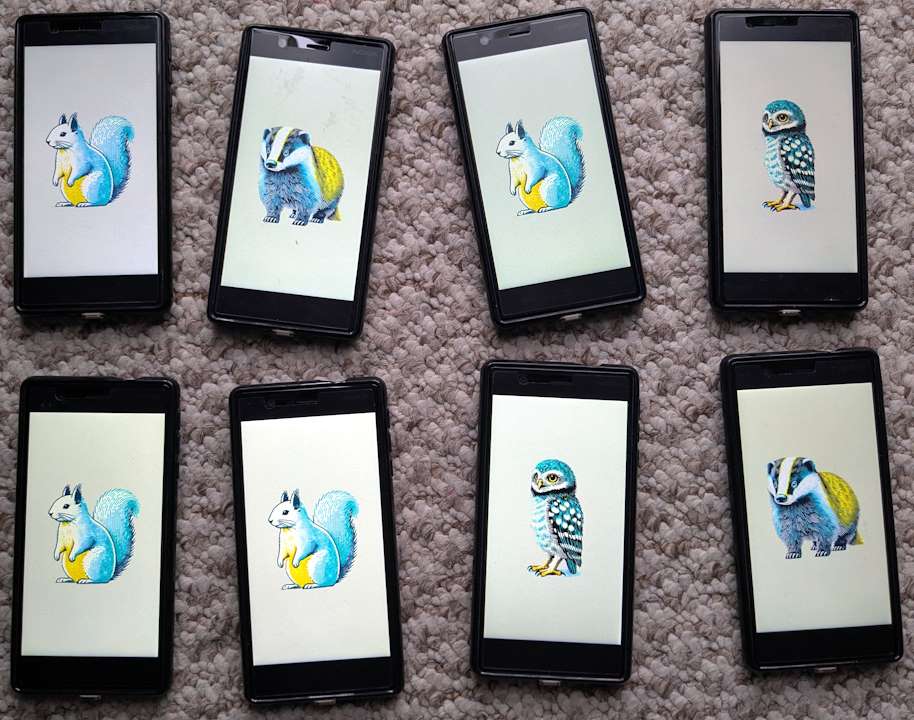
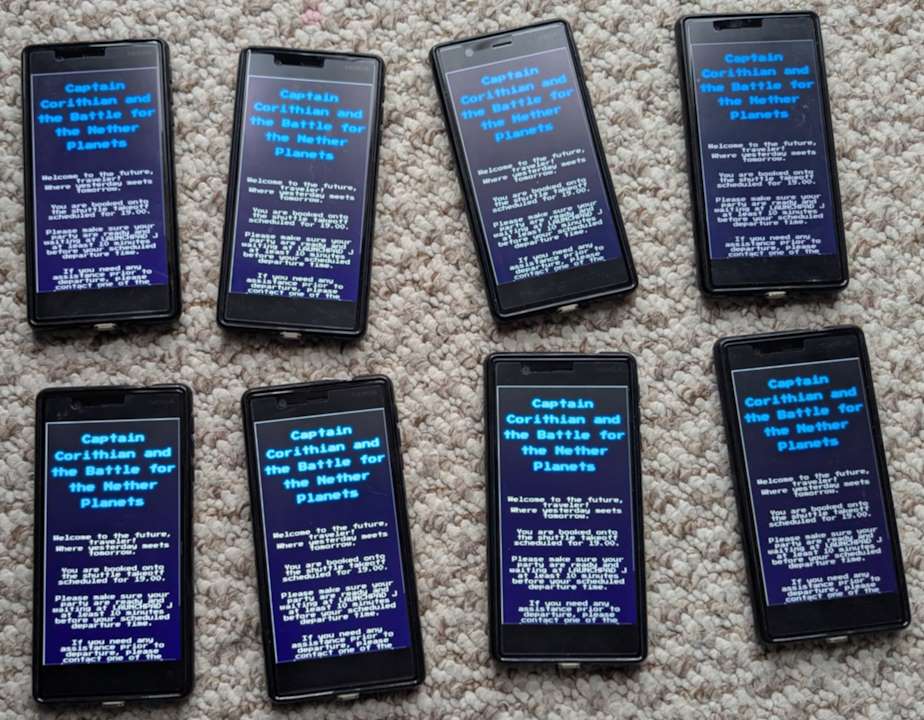
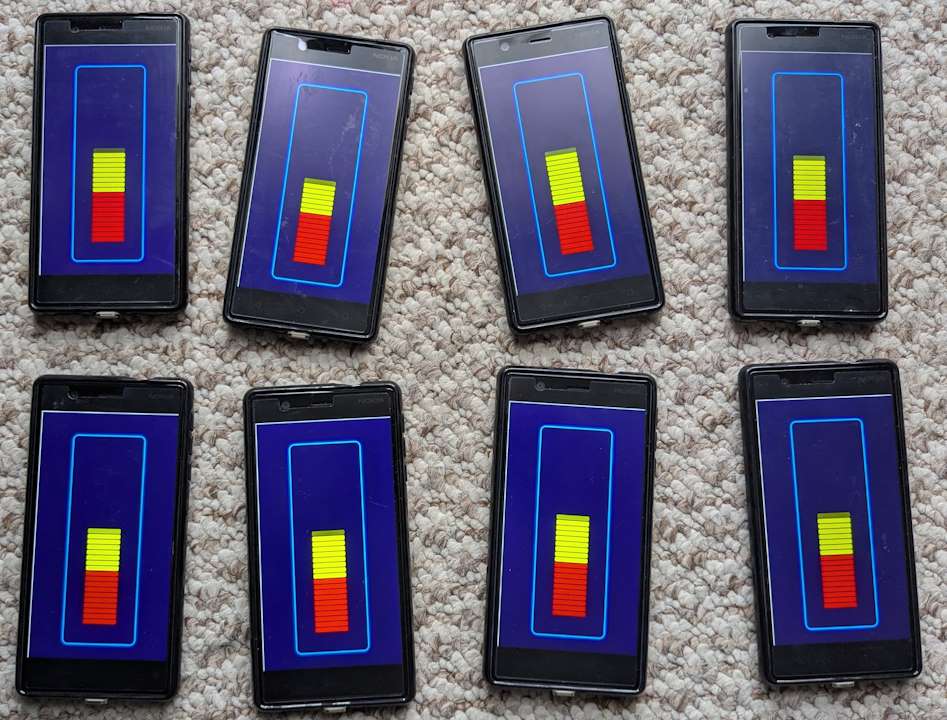
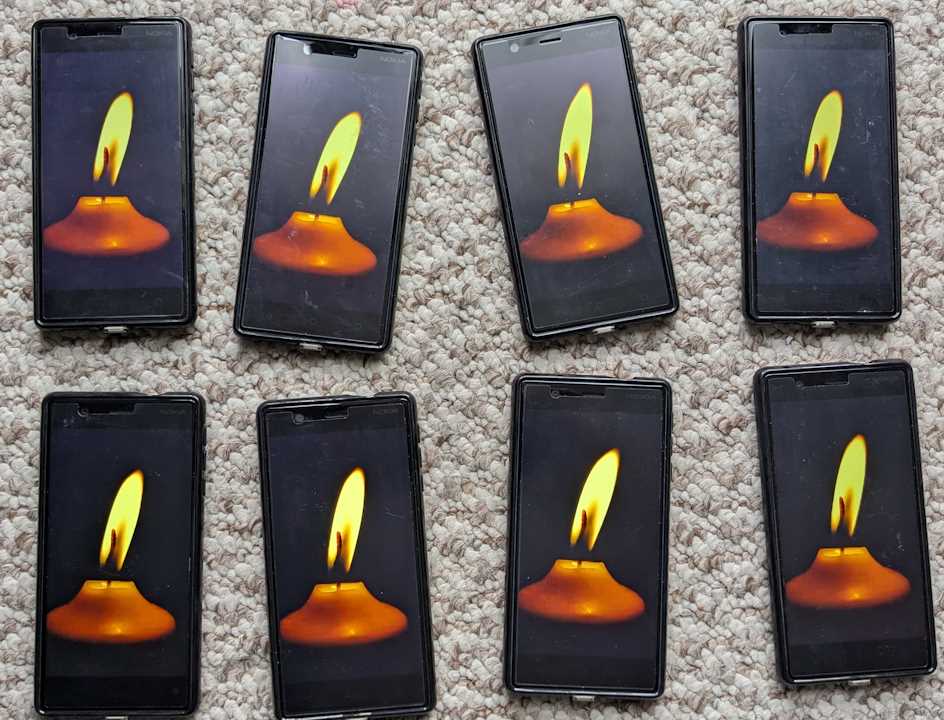
NAIAD continues to evolve, and we are excited about its future possibilities.
Native App vs Web App
So, how to get this content and software onto audience phones. While it may seem that having a Native App is the right way to go (and it would allow the technical development to be simpler). Installing a Native App is usually a barrier (and it can take you out of the immersive storyworld). Instead this is a Web App. You simply scan a QR Code, NFC tag or use a shortened version of the web address and you’re all ready to go immediately.
The clever part of this is that once you are on The Diviners website - we are already able to control what is displayed on your phone. We simply swap out the 90’s style website for whatever content we want to show. This is completely seamless to the player and gives the appearance of us ’taking control’ of your phone. While ’taking control’ of the phone might sound invasive, the reality is that the user remains within their browser, and we simply update what they see in real time. Instead of a static webpage, their screen becomes a dynamic, interactive part of the experience.
The first step for The Diviners was to extend this rudimentary technology to allow it to sync-up with the performer action so that audience phones work in collaboration with the tools used by the performers. For instance, when a scanner is placed underwater to investigate the disturbance, we can push a video feed of the scan directly to audience members’ phones, creating a shared experience and allowing them to see underwater. We extended this to support various content types, including images, video, and audio.
Technical Considerations - keep it small!
One of our key technical challenges was ensuring that the website / microsite, and all assets remained extremely lightweight. This was particularly important because the platform was designed to be used outdoors, where Wi-Fi and mobile data connections are often unreliable.
It’s astonishing how small you can make video, image, and audio files today (if you’re willing to), particularly when they are being viewed on a relatively small mobile phone screen. The difference between full 1080p resolution and a much lower resolution is often imperceptible at such a scale. We focused on keeping video files compressed to just a few hundred kilobytes and images under 50KB.

Moving Forward
We pitched an immersive experience based using NAIAD around a dystopian exercise workout. Where the attendees place their phones in a ‘mobile phone armband’. We wanted to explore an experience where you use your own phone, keep it safely on your person, but you’re unable to see it yourself and rely on others. It is used to score your performance and progress - a kind of immersive Black Mirror episode. We (along with just about everyone in the Immersive Arts world) applied to the Immersive Arts UK fund. We were 1 of 2517 applications for the first round!!!
Note: If those applications are split evenly between the £5K, £20K and £50K options - Immersive Arts UK needs ~£63M to fund them all. Currently, they has £3.6M to give out to 200 artists over the next 3 years. So, I’m not feeling super hopeful!
Work with us
Instead, we will be looking at further funding from InnovateUK on the technical development and ACE grant to work with other artists. We’re looking for artists who would like to use the NAIAD platform with their own work. We can provide training and technical development - adding new features if that’s feasible. You can play with the platform yourself or if you’re not technically-minded we can do that for you. Do get in contact in you’re reading this in Q1 of 2025. We hope to offer small pots of funding for involved artists.
